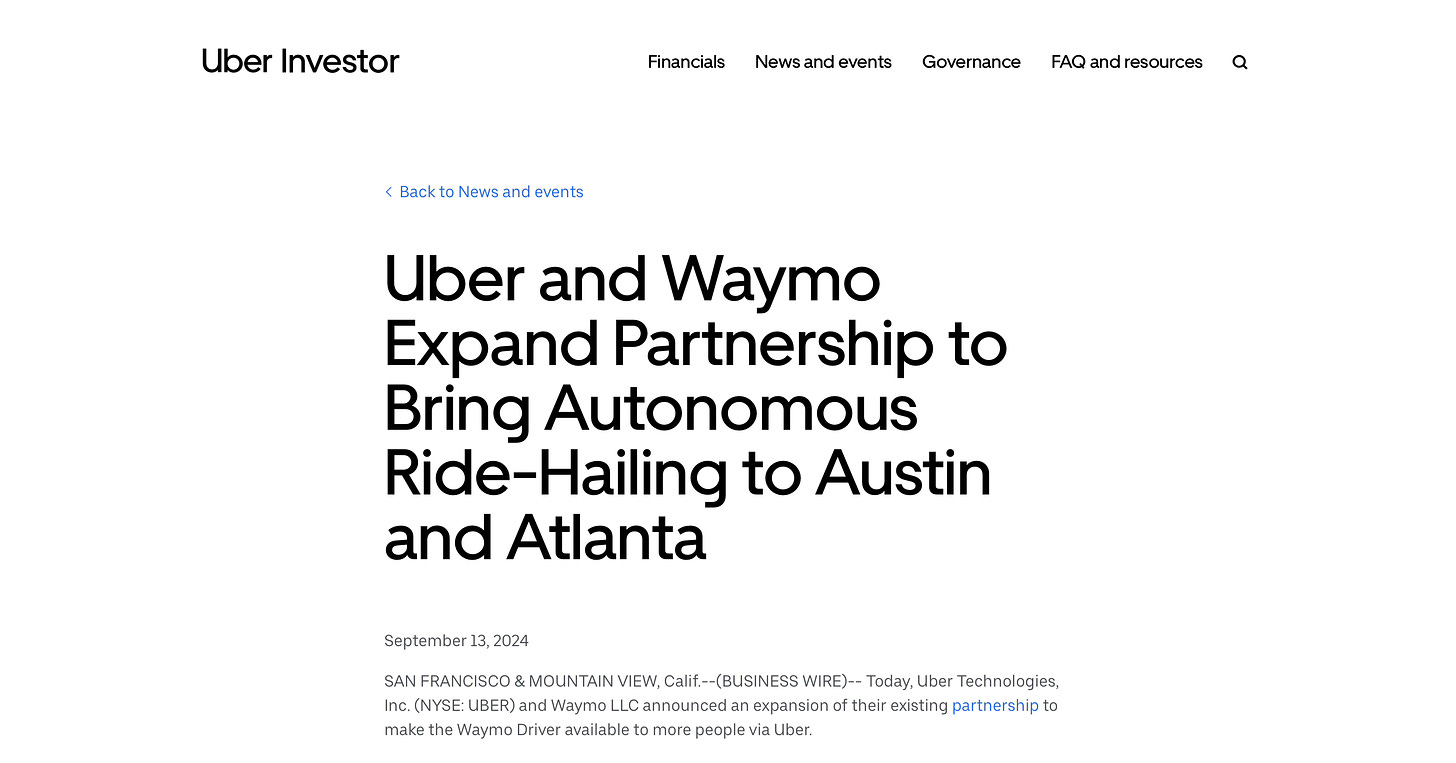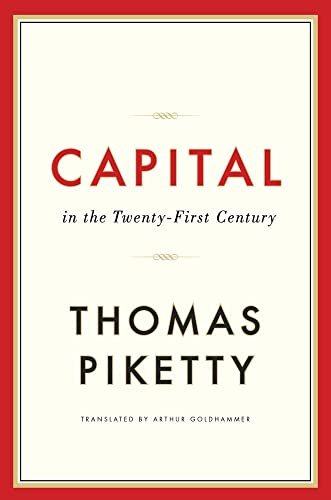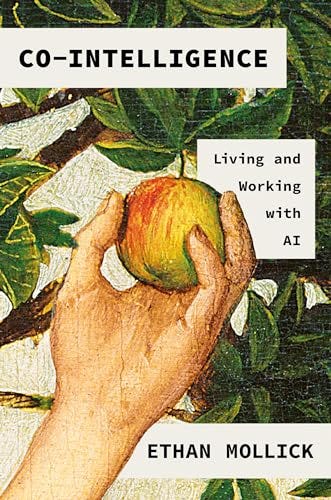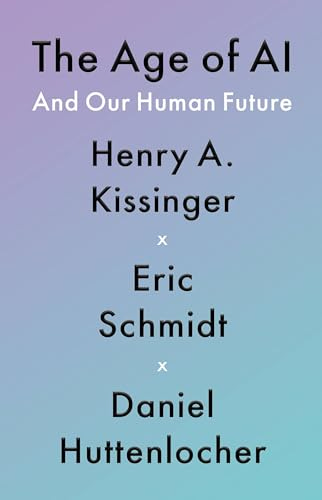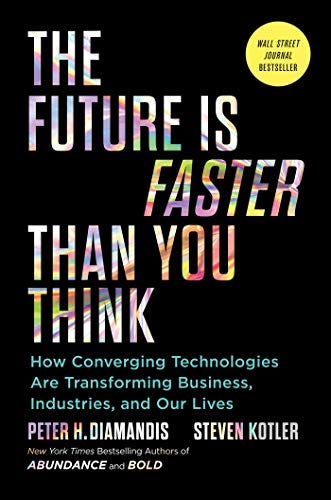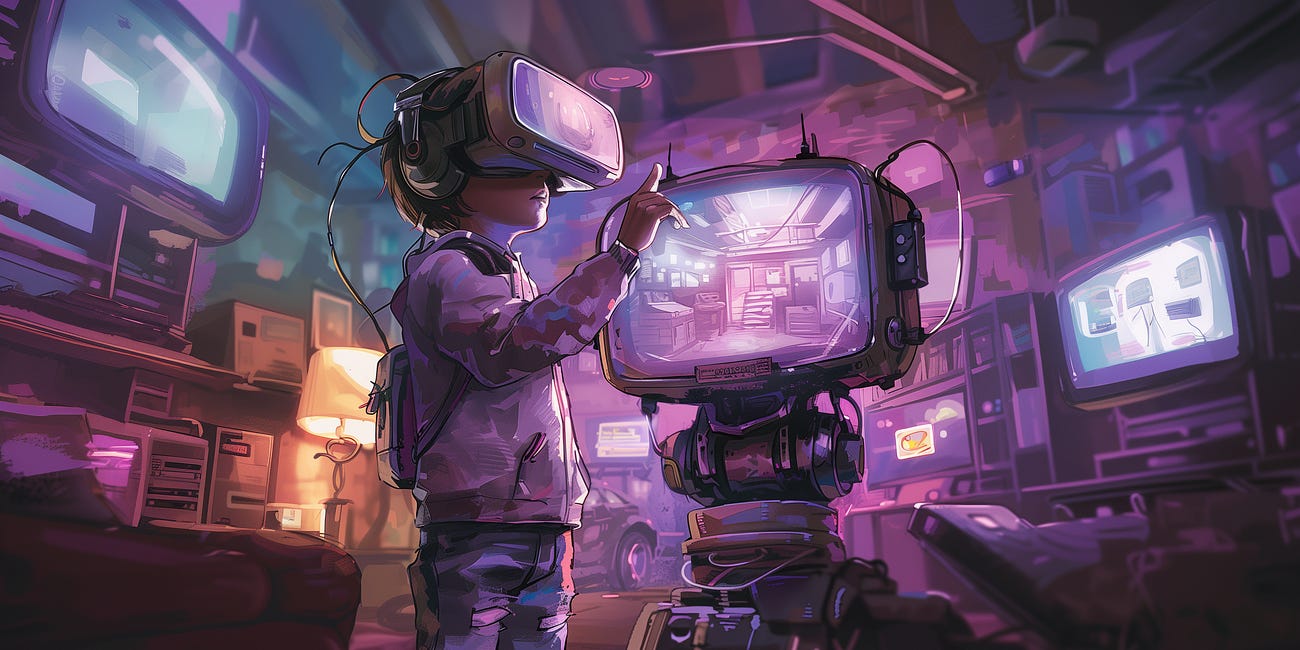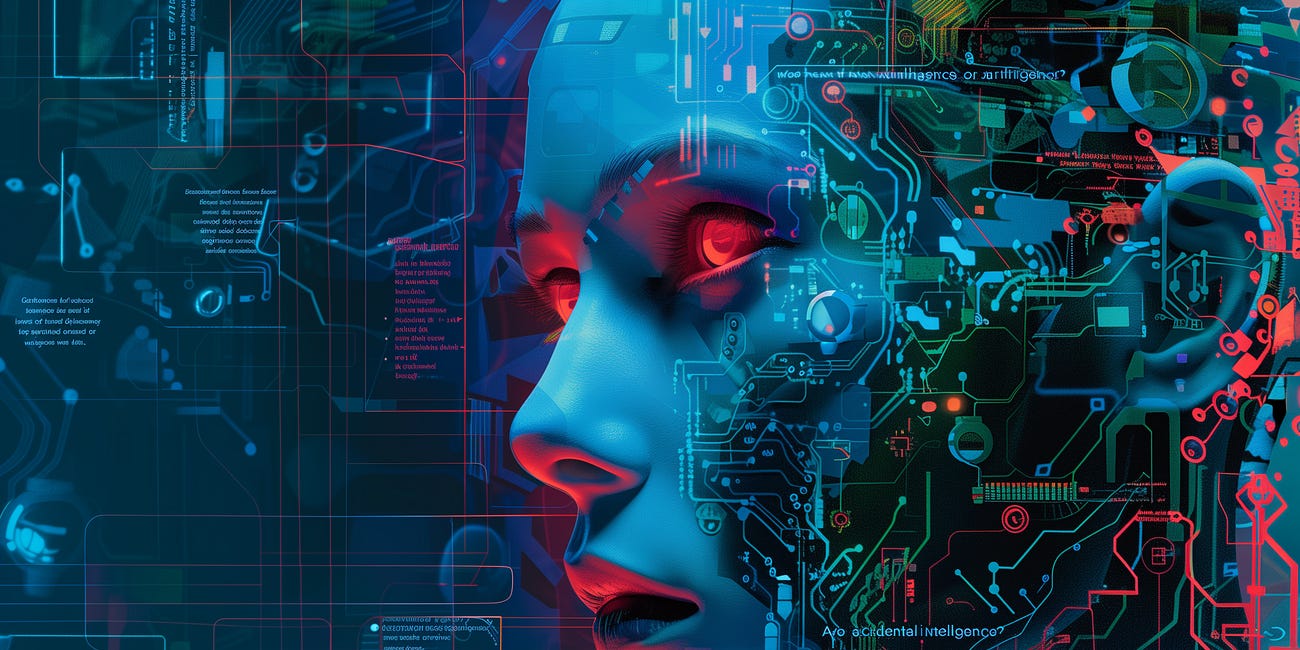When Labor and Capital Are Free
In this story, we speculate about the future of the Attention Economy as labor and capital continue to trend towards free. 📉
By 2035, most people may opt out of work and still live amazingly comfortable lives. If that seems preposterous, you should realize that we are almost there. The Labor Force Participation Rate in America has dropped almost every year since the Internet was invented and it’s currently only 62%.
Soon, that rate will decline even faster as the next generation of humanoid robots from Figure, Tesla, Agility Robotics, Apptronik, Fourier Intelligence, Boston Dynamics, Halodi Robotics, and Beyond Imagination join the economy. Elon Musk is calling these new generative-AI robots, “genies with unlimited wishes”.
Our super genius robot butlers of the near future will:
🧠 be smarter than ChatGPT 5
🔎 search the Internet just by thinking
🗣️ speak every human language
🛜 speak every computer language
🩻 know more about healthcare than human doctors
👩⚖️ know more about laws than human lawyers
🍼 follow babysitting instructions better than human babysitters
🛠️ repair any car or tool
🧱 build houses faster than us
💵 invest money smarter than us
🚙 drive safer than us
🛒 put away all our groceries
👩🍳 cook like a yacht chef
👀 never sleep, and
🔋 eat electricity
Personally, I’m going to own three of them because I want my landscaping to look like the cover of a gardening magazine all throughout the year. 💐
Here are a few videos to demonstrate where these manufacturers are today. If you were born before 2015, these demos will blow your mind. (1 min)
If you play these videos for at least 1 second, your YouTube algorithm will get smarter. Here is a demo of Tesla’s first humanoid robot, Optimus. (1 min)
These robots will get smarter, faster than ever before, because they learn from us and each other. For example, Tesla has 500,000 robot cars in the wild watching us drive 12,000,000 miles every day. My car gets a new brain update from all that training data more often than my iPhone gets an update from Apple.
Here is a demo of Digit, which is taking over Amazon warehouses. Since 2021, the world’s second largest employer has reduced it’s human workforce by more than 100,000 people every year, while simultaneously increasing it’s robot workforce by more than 200,000 robots every year. (2 mins)
These robots are fully aware of their surroundings, just like ChatGPT 4o. (1 min)
In fact, OpenAI makes the brains that embody the Figure 01 robot, so they will all have configurable personalities like this. (2 mins)
OpenAI, Google, Microsoft, Apple, and Meta will all battle aggressively to be the preferred “aftermarket brain” inside your robots. Whichever AI you talk to everyday will be the one that makes the most money from influencing you. 🤔
Here is an incredible demo of Google’s latest AI assistant. I can’t imagine programming a computer that can produce these outputs given the inputs. (2 mins)
Patterns in Technological Revolutions
These super genius robot butlers will permanently transform our global economy. Here is a TED Talk from billionaire venture capitalist, Vinod Khosla, to give us a glimpse into our future because it is absolutely fantastic. Definitely play this video for 1 second so YouTube will recommend it to you later. (9 mins)
For a deeper understanding of how these robots will transform our society, we need to look into our past, because we already know about several previous technological revolutions that permanently transformed the global economy. My favorite book to do that is called, The World After Capital by Albert Wenger.
This book is so smart. Wenger goes back in time to show how the original “fundamental scarcity” in the global economy was calories. Think two cavemen fighting over an elephant carcass. But after the Agricultural Revolution, the fundamental scarcity in the global economy shifted from calories to fertile land. If you could control fertile land, you didn’t need to spend all day hunting for calories.
War evolved to control fertile land, which required governments to manage larger and larger territories. This is why the Achaemenid Empire invented satraps and the Romans innovated road and bridge construction. Taxes during this time were paid in grain and livestock (agricultural products). 🌾
Fertile land was the fundamental scarcity in the global economy for thousands of years until the Industrial Revolution. After this second technological revolution, the fundamental scarcity in the global economy shifted from fertile land to financial capital. If you can afford to build a factory on your land, it creates way more economic value than farming it.
The Industrial Revolution forced governments to innovate again. For example, during the first 150 years of American democracy, 90% of tax revenues came from tariffs on liquor, beer, wine, and tobacco (agricultural products). It wasn’t until 1913 that the US government invented the IRS 1040 Form to tax the Industrial Revolution. Ever since then most tax revenues have come from income and estate taxes (financial capital). 🏦
War changed too. The Cold War against the USSR might have been a cold “land war”, but it was a very hot “capital war”. The bullets and bombs of Cold Wars are international tariffs, trade embargoes, and free trade agreements. America only won the Cold War because we outspent the USSR with our virtually unlimited credit. 💳
Financial capital was the fundamental scarcity in the global economy until the Information Revolution. After this third technological revolution, the fundamental scarcity in the global economy shifted from financial capital to human attention. That’s because revenue margins on software are twice as good as traditional businesses (as evidenced by the top 10 most valuable companies in the world right now). 👨💻
The Information Revolution is already forcing governments to innovate in unexpected ways. In countries that have total control over their media (like Russia and China), they installed national firewalls and government censors to “manage” their “free” elections. But in countries with free press, the price of democracy is skyrocketing. The senate seat in the 2020 Georgia election cost $514 million dollars, which demonstrates the rising costs of acquiring human attention.
War is changing too. The Russian army is now hacking the email servers of political candidates and funding disinformation campaigns in our elections because the bullets and bombs of information wars are memes, fake news, and doxing private data. The Second Civil War going on in America right now is actually an information war. It’s a cold “land war”, a tepid “capital war” (only a few religious florists and bakers refuse to do gay weddings), but a nuclear hot “information war”.
Here is a rough sketch of Albert Wenger’s framework over time:
War for Calories
Agricultural Revolution »
War for Fertile Land
Industrial Revolution »
War for Financial Capital
Information Revolution »
War for Human Attention
??? Revolution »
War for ???I think of Wenger’s framework for technological revolutions like Maslow’s Hierarchy of Needs, but for Macroeconomics. So that leads us to the fourth technological revolution that will permanently transform our global economy—the Productivity Revolution. If everyone has super genius robot butlers to do all our work, then our attention will go from scarce to sufficient (just like calories, land, and capital). So:
How will our taxes change?
How will our wars change?
What will people do with their time all day?
What will become the new fundamental scarcity in the global economy?
Technological Deflation
To answer these questions, we need to appreciate Technological Deflation.
Deflation just means “prices going down”.
Technological deflation is the reason life keeps getting better for everyone. For example, before the discovery of electricity the only people who could afford a warm bath had to heat the water with firewood that someone had to chop with an ax. It was so expensive to fill a bathtub that multiple bathers had to use the same water. By the time the last person was done, the water was so filthy that you couldn’t see through it, which is where we get the phrase, “don’t throw the baby out with the bath water”. Today, it only costs about $0.80 to heat 40 gallons of clean water.
That’s technological deflation.
Compare $0.80 to the price of hiring a person off TaskRabbit to chop firewood, build a fire, and manually fill a tub with a bucket. That’s at least $40. So that’s why everyone lived like cavemen before 1850. Toilet paper wasn’t even invented until 1857. Even Louis XIV, the opulent Sun King of France, had to poop in a bowl at night called a “chamber pot”. So we should all be unimaginably grateful for technological deflation.
Technological deflation creates more free time for everyone. In 1900, 85% of Americans worked in agriculture on individual family farms, including women and children. The average work week was 70+ hours. Today, only 2% of Americans work in agriculture despite the fact that they feed 5 times as many people. During that time, the average work week dropped to 38.5 hours even with the Labor Force Participation Rate at 62%.
Technological deflation creates a “virtuous loop” within our economy—the more abundance we create, the more attention we have to create more abundances. 🌪️
Total Robot Takeover
What’s different today is the speed of technological deflation—it’s accelerating. This is easiest to see in computer manufacturing because the components are so small that we can only build them with robots. Over the past 20 years the cost of the CPU per transistor has fallen 20-30% per year. Every year. That’s some serious negative compound interest. This deflationary rate will spread to every aspect of the global economy as our robots learn to:
drive better than people
design better than people
program computers better than people
carry heavy things better than people
write better than people
pay attention better than people
serve people better than people
invest better than people, and
heal people better than people.
Everything humans teach a computer to do, the computers eventually become superhuman at it. For example, chess programs in the 1990’s could defeat 95% of the humans they faced, but they were no match for the best human players in the world. Today, there are no humans who can beat the chess programs.
Self-driving cars are already on the same trajectory. My Tesla drives better than me 95% of the time, but it’s currently no match for Lewis Hamilton. The problem is the cost of Lewis Hamilton’s attention is extremely expensive, whereas the cost of my Tesla’s attention is closer to the price of electricity. Eventually the most expensive component to replace inside an F1 racecar will be the driver. That’s already true for Uber—looks like they will start replacing their human drivers in 2025.
Now there are plenty of doubters who say computers won’t replace humans in every job because some jobs require strong personal relationships, but they are wrong. Computers will compete against humans in every way we can imagine, including friendships. They already are. Meet Xiaoice, who has a shocking 660 million “best friends” worldwide.
Xiaoice isn’t task-based artificial intelligence like Siri and Alexa. Here’s how Microsoft describes her,
Sometimes sweet, sometimes sassy and always streetwise, this virtual teenager has her own opinions and steadfastly acts like no other bot. She doesn’t try to answer every question posed by a user. And, she’s loath to follow their commands. Instead, her conversations with her often adoring users are peppered with wry remarks, jokes, empathic advice on life and love, and a few simple words of encouragement.
Herein lies the secret of her success: She is learning, with increasing success, to relate and interact with humans through nuance, social skills, and, importantly, emotions.
And, while they know she’s not real, many prize her as a dear friend, even a trusted confidante. Sometimes the line between fact and fantasy blurs. She gets love letters and gifts. And not too long ago, a group of fans asked her out to dinner and even ordered an extra meal – just in case she showed up.
Her popularity is such that she ranks among China’s most admired celebrities. And, her talents appear to have no bounds: She is a poet, a painter, a TV presenter, a news pundit, and a lot more.
Computers aren’t just competing against us for friendships, they are also competing against us for sexual relationships. Companies, like Realbotix and Synthea Amatus, are already building the highest quality robot girlfriends. Here is a video from Vice News about Harmony, the fembot from Realbotix. Users can change her personality from an app on their phones. (4 mins)
@oldpeople: Now any Gilligan can have Mary Anne during the day, and Ginger at night.
The Politics of Fairland
Every hour a robot spends working for us in the economy, unloading our groceries, or driving our kids to soccer practice becomes an hour of attention returned to its owner. To get the clearest picture of what this means for our society, here is a thought experiment I pitched to my friends on Instagram a few years ago called, Fairland.
Imagine a planet that has the technology of 1850 where the entire economy is exactly equal. There are 1M plots of land, exactly 1000 acres each, and every household grows their own food and keeps their own animals. Each family spends most of their day working to feed themselves, but any leftover hours are spent making clothes and pottery to sell to each other. Every household is equally miserable and makes $3k per year—the average income of 1850. Let’s call this “Fairland”. 🧮
In Fairland, a little genius is born named Elon Husk. Tinkering in his barn, he invents a solar powered robot who can perform all the farm duties of 10 people. He sells them for $30k dollars (the nicest John Deere tractor currently costs 10x the average annual income). Assume everyone finances these robots and increases their cultivated acreage so that they fully own their robots within 10 years. Now, everyone has exactly the SAME LIFESTYLE as before, but NO WORK.
That is complete technological deflation.
Everyone is suddenly unemployed and bored. Some Fairlandians begin painting, some start their own tech research, and some write music—a renaissance is born. Children’s games, like basketball and baseball, become professional sports for adults because now other adults have the free time to watch them play. Life is good. 🎉
The problem with Fairland is that it’s no longer fair. Husk is now worth $30 billion dollars—10 times the rest of Fairland combined. Some “technologically unemployed” citizens invent new jobs while others decide to go fishing. 🐠
So, what happens next in this story?
Does average drug use increase or decrease?
Is it wrong if some people play video games all day?
If the government decides to build new roads, should they tax everyone equally? Or should they progressively tax Husk? What is Husk’s “fair share”?
If Husk decides to spend all $30B on R&D for self-driving rockets to Mars, then he won’t have any income to tax. Is that a good use of Fairland’s total economic power? Or should the government disproportionately tax Husk and invest his money in schools and bridges?
Should 55% of all Fairland taxes go to Social Security and Medicare for old people who had a lifetime to save, while only 4% goes to education and 1% goes to affordable housing? #murica
If Husk leaves all $30B to his kids, how much should the government take from his estate?
@economists: Robots will compete against humans for almost every job in our economy from plumbers to prostitutes, which means corporations will be able to CAPEX and depreciate most of their labor forces. What Chief Financial Officer isn’t going to amortize a note to eliminate their company’s biggest OPEX?
We are already living in the Second Gilded Age. Without massive overhauls in the redistribution of wealth, GINI coefficients around the world will continue to spiral out of control. “Capitalized Labor” might create a gilded age, on top of a gilded age. Legislators will need to redistribute so much capital, that we will need unprecedented laws to prevent Market Populism from siphoning away any concentrated profit streams that local economies could tax.
When robots largely replace people in our current economy, there won’t be very much labor income to tax. So we will either need to tax robot labor, or we will need to finally tax capital gains higher than labor income. If you have a Nobel prize in economics, I want to ask you as many questions as you will tolerate about this. I will fly to wherever you are and buy you dinner wherever you want.
It’s difficult to write about this topic and remain politically neutral because our future will not be like our past. I have been financially conservative for most of my life, basically libertarian, but those sensibilities become less and less relevant every day. Capital has been extremely scarce in the past, but it is sufficient today. If you divide global wealth by the number of people alive, there is already $84,000 per person for everyone on Earth. That number might be 10 times higher in just 20 years at our current rate of technological progress.
In 20 years:
We will have millions of super genius robot butlers building millions of super genius robot butlers to build affordable housing, pave new roads, and tend vertical farms.
Our mastery of DNA will yield 10-1000x as many fruits and vegetables per acre.
We will have “atomic printers” manufacturing gold bars, diamonds, and rare earth elements.
All of our technology will be powered by near free electricity from tidal generators, solar panels floating on the sea, and hopefully zero point energy.
Labor and Capital will be abundant in the future, so our politics will have to change. Highly progressive taxes on capital will be the only thing left to tax when there is no more labor income. If you want to dig further into this topic, read Capital in the Twenty-First Century by Thomas Piketty. His very simple formula, r > g, may be the most important equation that governments around the world are currently ignoring.
The Future of War
The Productivity Revolution is likely to change our taxes, but it’s also likely to change our wars. In a future with unimaginable abundance, wars don’t make much sense. So I think we’ll see a broad shift in society from conspicuous consumption to “conspicuous production”.
Ultra wealthy people have been doing this since the Industrial Revolution by donating libraries to colleges and wings to museums, but I think it will become a much bigger part of the global economy. For example, back in 1970 the Nobel prize winning economist Milton Friedman wrote an essay titled, The Social Responsibility of Business is to Increase its Profits, but today we are already seeing corporations who don’t view social responsibility that way:
Patagonia: donates 1% of sales to environmental causes through their "1% for the Planet" initiative.
TOMS Shoes: donates a pair of shoes for every pair sold.
Warby Parker: provides a pair of glasses to someone in need for every pair purchased.
Bombas: donates a pair of socks to homeless shelters for each pair sold.
Newman's Own: donates 100% of profits to charitable causes.
Ethique: produces zero-waste beauty bars and donates 2% of revenue to conservation and animal welfare projects.
Thrive Market: matches membership donations for low-income families and offers access to healthy, affordable food.
Tentree: plants ten trees for every item sold, aiming to plant one billion trees by 2030.
Hand in Hand Soap: provides a bar of soap and a month of clean water to a child in need for every product purchased.
Who Gives A Crap: produces eco-friendly toilet paper and donates 50% of profits to build toilets and improve sanitation in developing countries.
Hopefully, this story has given you a brief glimpse into our impending future. The robots are coming. Super human artificial intelligence is inevitable. None of us can avoid them, so we might as well learn to thrive with them. Inform yourself—click on all the videos in this story to educate your YouTube algorithm. Read the book, Co-Intelligence: Living and Working with AI, by Ethan Mollick.
Also try The Age of AI: And Our Human Future by three really smart people.
Also try The Future Is Faster Than You Think: How Converging Technologies Are Disrupting Business, Industries, and Our Lives by Peter Diamandis.
We will continue learning about our impending future in the next two stories, which answer two important questions we didn’t answer in this one:
When calories are abundant, land is abundant, capital is abundant, and attention is abundant…what will people do with all their free time?
We answer that question in The Attentional Investor.
After the Productivity Revolution, what will be the next fundamental scarcity in the global economy?
We answer that question in Weapons of Mass Deception.
Continue reading…
The Attentional Investor
In this story, we learn the difference between paying attention and investing attention. We also discuss content budgets, which protect us from total entertainment forever.
Table of Contents
The Computer Science of Everything
God isn’t some old, white man with magical powers. God is a quantum computer scientist with super advanced technologies.
Huge Thanks 🙏
to all our sponsors. Your support helped us reach new academics, scholars, and scientists all around the world through social media.
Caitlin Knauss
Worth Denison
Alana Aviel
Anonymous
Jeremy Wells
Ronnie Blanton
Tarrytown Bible study
If this content was helpful to you, please consider investing in our mission to spread the Good News of Jesus Christ. “Love your neighbor as yourself” might be the only reason that artificial super intelligence doesn’t kill us all.
Donate by credit card or bank transfer:
Donate Bitcoin to this address: bc1qsn9xrd3yrfg4zqydc5aqns3uwvhrdqay8d7vht
Donate by subscribing to our investor newsfeed:
Wanna chat about this story? Email us or leave a comment below:
What did you love the most?
What did you hate the most?
What surprised you the most?
What confused you the most?
Economics Overtime
@economists: The average hours of “lifetime leisure” have quadrupled since the Second Industrial Revolution. Lifetime leisure went from 43,800 hours in 1890 to 176,100 hours in 1995. In America, the COVID-19 stimulus checks have surely raised those averages even further.
Those COVID stimulus checks were Universal Basic Income, no matter how you look at them, and they have created severe labor shortages. Many restaurants from coast to coast are short staffed. So until the robot butlers arrive, how do we solve this problem? If a country simultaneously a) pays people without working and b) sets high minimum wages for employers and c) refuses cheap labor with strict immigration, then how can that country NOT manufacture a labor crisis?
This loop only encourages capital to invest in more “capitalized labor”.
@economists: The human attention of Jeff Bezos and Elon Musk will eventually lift the quality of life for practically every human on Earth. The technological deflation produced by the corporations they control is unprecedented in the history of the world. The scale of their innovation is unprecedented no matter how you measure it:
Total computational leverage
Total intellectual property leverage
Total human capital leverage
Total financial capital leverage, or
Total customers
Remember how rich Rockefeller was in 1900? Let’s assume every single American alive in 1900 was an indirect Rockefeller customer—that’s 76M customers. Jeff Bezos has 200M people paying $10 every month for the right to be an Amazon Prime customer. 🤯
The Pareto Distribution in agrarian economies had a ratio of 80 to 20: 80% of the land was owned by 20% of the people. But information economies push the Pareto Distribution to extremes: 95% of all eBay transactions come from just 6% of all eBay sellers. Out of the 1.6 million artists who released music to streaming services in 2020, only 1% of those artists pulled in 90% of all streams.
When you consider the extreme Producer-Consumer Asymmetry of information economies, Jeff Bezos isn’t even that rich. He’s worth $150 billion, but his Amazon Search Bar serves more than 300M humans on Earth. So conservatively, each Bezos customer only transferred $500 to him in their whole lifetime? That’s a pretty fantastic deal for the improvement he produced in 300 million people's lives. Jeff Bezos eliminated every middleman between the industrial factories of the world that make stuff…and your house.
If you feel like this is a little too fanboy, realize that I have spent 25 years in the trenches of entrepreneurship. Founders are my people, especially founders with that many MAU. If Jeff Bezos needs a yacht the size of a floating country to maximize his Attentional Efficiency, then the yacht’s operating budget is financially efficient. That’s how valuable some people’s Time can be versus Money.
The human attention of Elon Musk is currently creating unprecedented technological deflation in multiple domains:
digging subterranean tunnels for cars
reducing greenhouse gasses in the atmosphere
getting heavy payloads to outer space, and
protecting free speech on the Internet.
How can you not have an economic crush on an entrepreneur like that? Musk is investing his own time and money to make everyone’s life better on land, in the air, in space, and online.
@elonmusk: You have conquered almost all the Domains of War listed by the US Armed Forces: Land, Sea, Air, Space, and Information. To conquer the sea, maybe you could start a company to desalinate the ocean and run a freshwater pipeline to the top of the Colorado River? Eventually, energy will be cheap enough to turn Arizona green. 🪴
@creators/influencers: Within a decade, our super genius robot butlers will collect 8K content around us constantly. Their generative-ai will automagically cut, edit, scrub, and polish our lives into:
live streams for Twitch and Kick
shorts for TikTok and Instagram
essays for Substack and LinkedIn
memes for Facebook and Twitter
episodes for YouTube
and whatever social media matters in the future
The next generation of AI will allow us to choose our light in post, especially with the amount of data they collect. They will even segment our content for various audiences so that we get the deepest reach. Just think about how much more content you could produce with a “creator robot” like that. In the future, everyone will be capable of running 15-30 channels, podcasts, and live streams at the same time…so get ready for a content supernova. 💥






